Vintage Treasures: The Starhammer/Vang Trilogy by Christopher Rowley
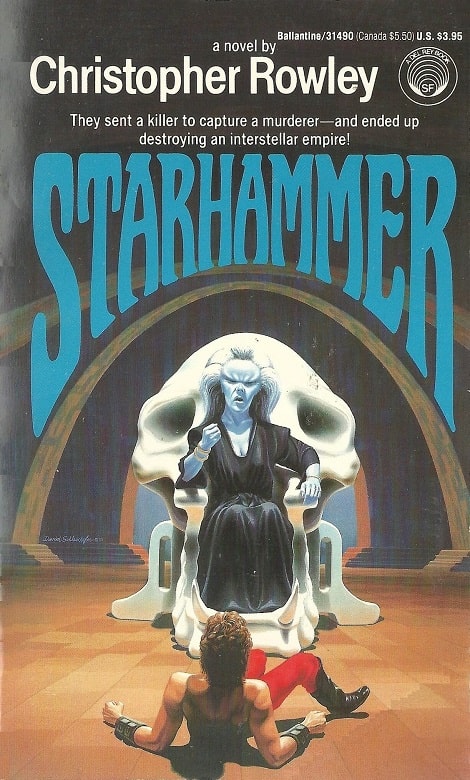 |
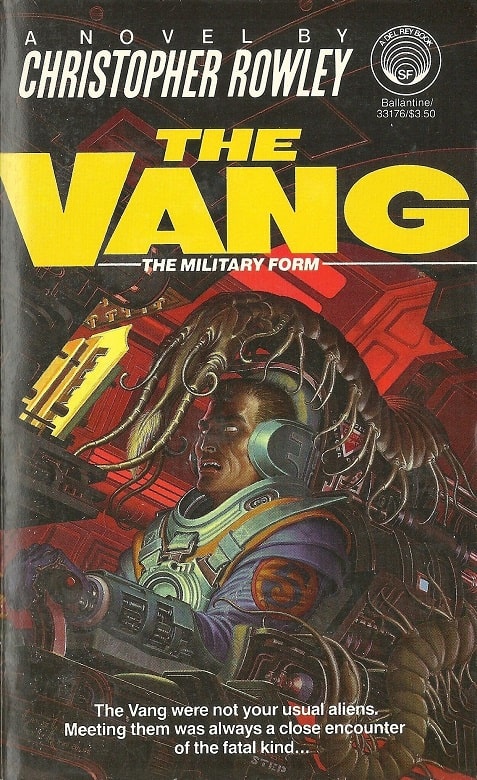 |
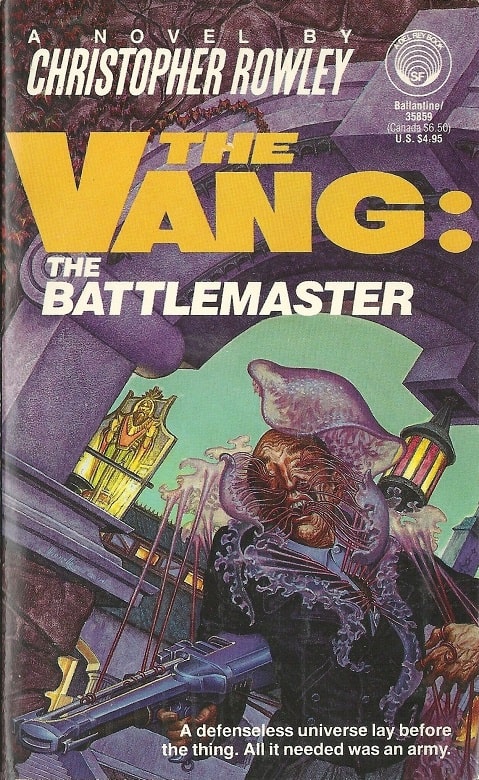 |
Starhammer, The Vang: The Military Form and The Vang: The Battlemaster
(Del Rey, 1986 – 1990). Covers by David Schleinkofer and Stephen Hickman
I’m a huge fan of modern science fiction, and I find no shortage of new novels and and series to coo over here. But there are times when I miss the old-school SF of last century, rooted in the Cold War paranoia of the 50s and 60s. The Golden Age of invaders from space, all-consuming blobs, and gooey alien parasites that have their sights set on your lower G.I. tract.
In the late 80s Christopher Rowley, author of the popular Battle Dragons series from Roc, had a hit with his Vang novels, a space opera/alien parasite hybrid. Clearly inspired by the author’s love of Alien and pulp-era SF by A.E. Van Vogt, Jack Vance, Eric Frank Russell, and others, the trilogy — Starhammer, The Vang: The Military Form and The Vang: The Battlemaster — had the sweep of epic space opera crossed with the gritty realism of James Cameron’s Colonial Marines.
The story of The Vang begins when the asteroid miner Seed of Hope, illegally prospecting in a Forbidden Sector of the Saskatch system, finds a billion year-old vessel containing an alien horror, the last vestige of a race nearly annihilated in an ancient conflict that convulsed the galaxy. It’s an encounter that will plunge humanity into a desperate war of survival.
[Click the images for Starhammer-sized versions.]
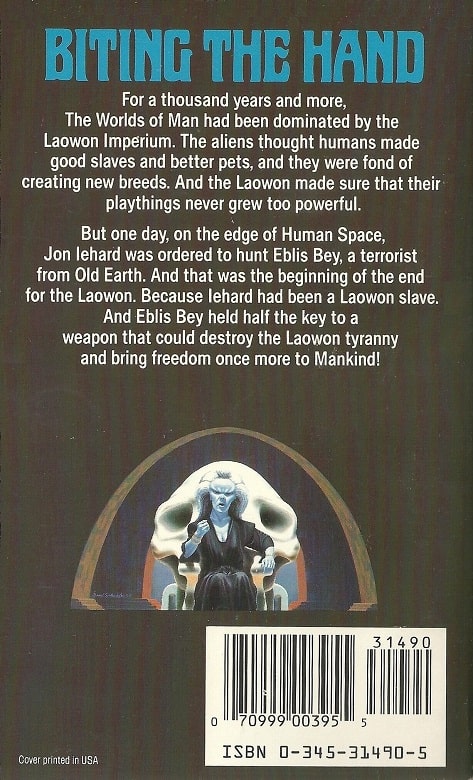 |
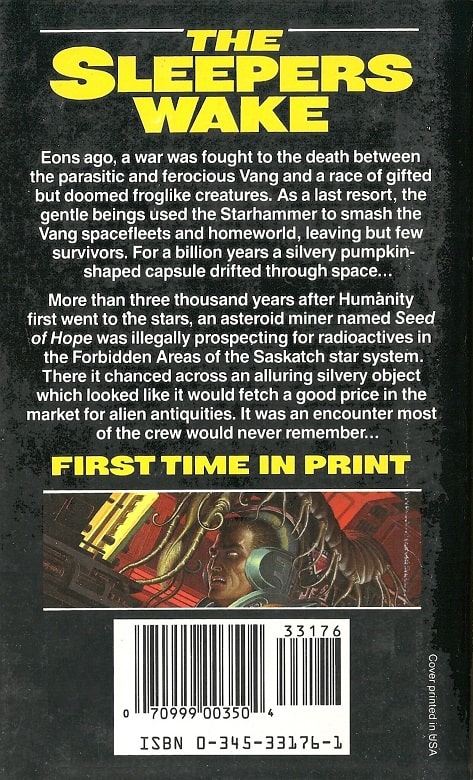 |
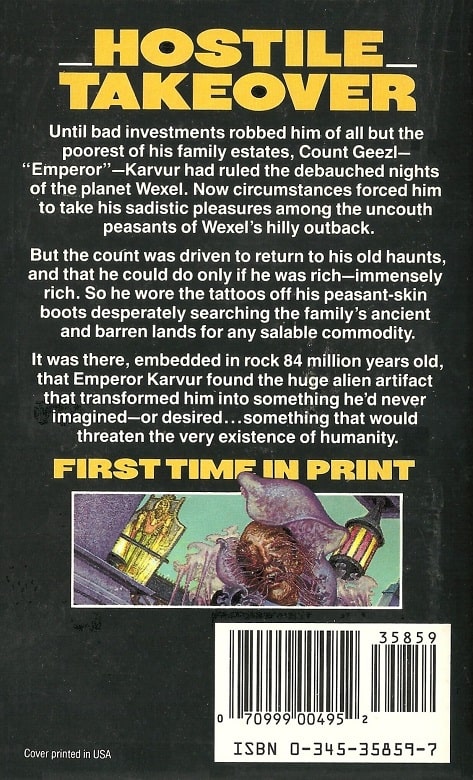 |
Back covers for Starhammer, The Vang: The Military Form and The Vang: The Battlemaster
On his website, Rowley makes no bones about his influences, including Ace Doubles, Clifford D, Simak, and Jack Vance. As he describes it, his goal was to create an alien race with the shudder-inducing terror of Alien while fixing their greatest weakness, by making them weapons-capable.
As I’ve said many a time, I’m a kid from the 50s who started reading SF in the shape of Ace Doubles in the D Series. My favorite authors as a kid were Eric Frank Russell, Andre Norton, James Blish, John Brunner, Clifford Simak, Alfred Bester and Philip Jose Farmer. A little later I discovered Clarke and Heinlein, Vance and A.E. Van Vogt.
Van Vogt’s “Rull” stories, James Blish’s Cities in Flight novels, all kinds of things from Vance and Russel, Norton and Simak, worked their way deep into my nine year old brain alongside Elvis, Elizabeth Taylor and the Purple People Eater… these are the influences that went into the Starhammer/Vang series. The idea behind them was to update the “space opera” subgenre and filter into it some modern SF style. I was hardly the only writer in the 80s to be doing this, of course, but I was writing for Del Rey, a very successful imprint and their meat and potatoes was adventure SF and here was a chance to have fun with the genre and along the way ask a few questions.
Another impulse was to undo the effect of Hollywood’s typecasting of alien life. I very much admired Alien… Alien had a serious beauty to it, a terrifying sound track and a wickedly good story… While being terrified by the movie on first viewing — people screamed and ran out of the theatre I was in during that showing — I was also busy acknowledging the smart science fiction background to it. Clearly A.E. Van Vogt’s “Ixtl” critter from the seminal Voyage of the Space Beagle was part of it. Another possible influence was Jack Vance’s magnificent Durdane trilogy, with his remarkable Asutra aliens. Others, from Heinlein to Russell also flickered through my thoughts.
The Aliens, however, had a major weakness. While being swift and powerful and undoubtedly deadly, they lacked the intelligence to employ weapons. If an advanced space going species were to go all the way down this road, from “replicants” to bio-weapons and beyond, where would it end up?
Vang-Military Form is where, at least in my opinion… we have a creature designed from the genes up. Parasitic, and capable of adapting any good host form quite quickly into a lethal battle-beast. But more than that, the Military Form is equipped with built in understanding of weapons and technology. From swords to laser cannon, slingshots to assault rifles, Military Form know it all. This makes them unstoppable, or almost.
The first two novels in the trilogy were reprinted in the UK by Arrow and Legend, with covers by Tim White (see below).
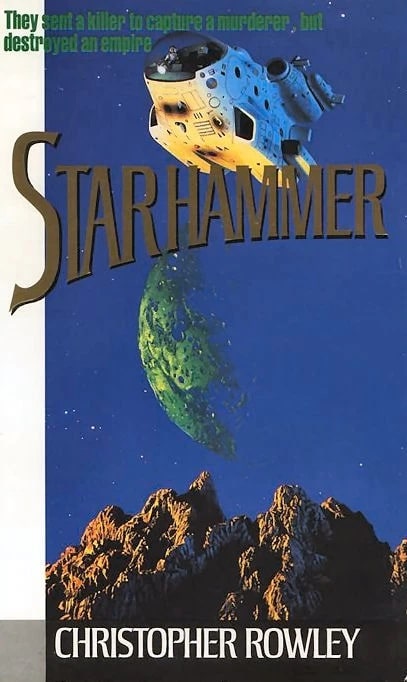 |
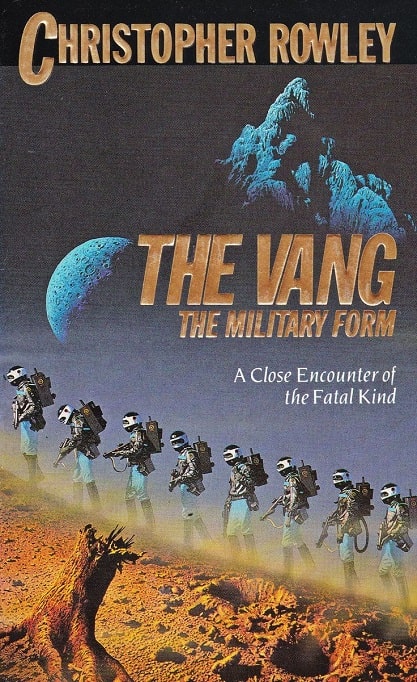 |
UK versions of Star Hammer and The Yang: The Military Form
(Arrow Books, 1987 and Legend, 1989). Covers by Tim White
The books are still read and enjoyed today. Here’s an excerpt from The Por Por Books Blog review from 2013.
The Military Form is set some 1,000 years after the events of the opening novel, Starhammer. Terra has succeeded in using the Starhammer to overthrow the tyranny of the blue-skinned, alien laowon, and humanity has expanded into much of the galaxy. Certain areas of space remain off-limits to exploration, however; not because of laowon edicts emplaced for economic reasons, but because they were scenes of combat millennia ago, between the race of un-named froglike aliens who created the Starhammer, and the virulent bioweapon – the Vang – that extinguished their civilization…
As the novel opens, an asteroid mining ship, the Seed of Hope, is on an expedition to the asteroid belt in the Saskatch system. Violating Federation proscriptions against venturing into the area, the Seed comes upon a strange, silvery object of alien design. Consumed by greed, the Seed’s crew endeavors to blast a hole in the object… but what they don’t know is that the alien artifact is a survival capsule.
And lodged within its interior, having endured thousands of years in suspended animation, is the quiescent stage of the Vang’s Military Form…
Once the Military Form arrives on the unsuspecting planet and its major metropolis, Beliveau City, the action content gradually dominates the narrative and the plot gains momentum, with some genuinely entertaining battle sequences shaping the book’s last 50 pages.
The Military Form are truly nasty monsters, ones that make the alien bioweapons in Ridley Scott’s 2012 Alien prequel Prometheus look… benevolent. I won’t disclose any spoilers, but I will say that author Rowley relates the gruesome actions of the Vang… with just the right note of deadpan humor.
As an adventure/action novel, The Military Form satisfies, and I recommend it to anyone interested in sf that features aliens that abhor the ‘Kumbaya’ spirit of interstellar relations.
Christopher Rowley is also the author of 10 novels in the Bazil Broketail/Battle Dragons fantasy series, and the four science fiction Fenrile novels, also from Del Rey (see below).
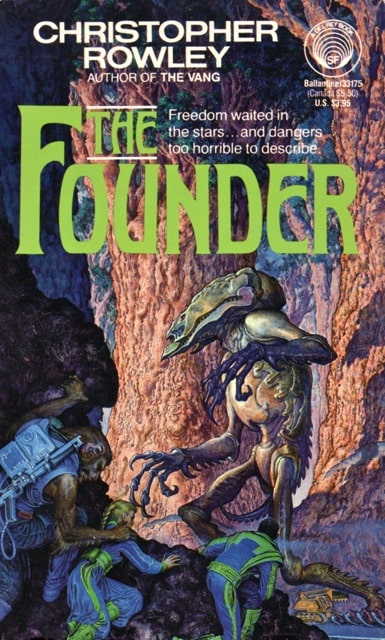 |
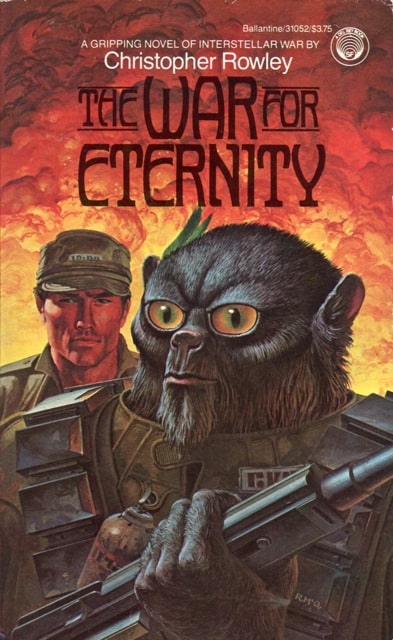 |
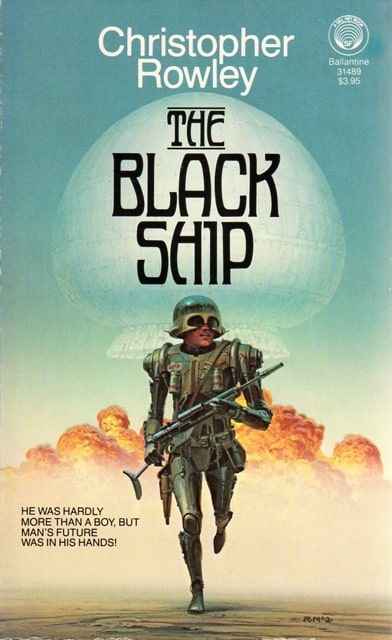 |
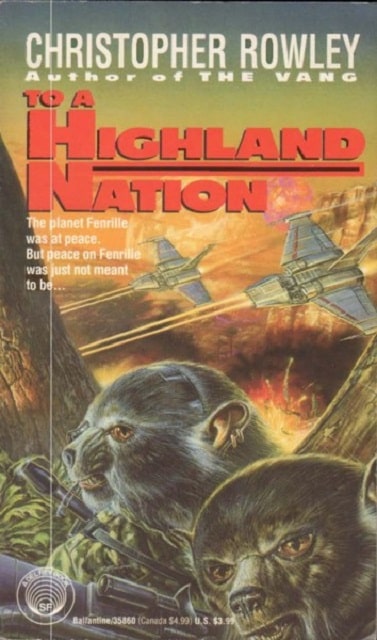 |
The Fenrile novels by Christopher Rowley: The Founder, The War for Eternity, The Black Ship and
To a Highland Nation (Del Rey, 1989-1993). Covers by Stephen Hickman, Ralph McQuarrie, and Bob Eggleton
Here’s the complete publishing details for the Starhammer/Vang novels.
Starhammer (303 pages, $2.95 in paperback, February 1986) — Cover by David Schleinkofer
The Vang: The Military Form (369 pages, $3.50 in paperback, March 1988) — Cover by Stephen Hickman
The Vang: The Battlemaster (318 pages, $4.95 in paperback, October 1990) — — Cover by Stephen Hickman
All three books were paperback originals from Del Rey. They have been out of print for over 30 years, and there are no digital editions.
See all our Vintage Treasures here.
As I recall, this was a major inspiration for creator Jason Jones when making the story for Bungie’s Halo.
Paul,
I didn’t know that! 90 seconds with Google was enough for me to stumble on this fascinating tidbit:
“On December 18, 2001, Bungie’s Truth and Reconciliation site posted a fan-conducted interview of Jason Jones. Jones cited Starhammer, by Christopher Rowley, as ‘one of the best bits of space opera of all time’, in response to a question asking about literary influences on Bungie storylines. Starhammer deals with (peripherally) a species known as the Vang… a species that should seem eerily familiar to Halo fans. Other plot points should hit home, as well.”
Read the whole thing here, including links to the interview:
http://halostory.bungie.org/rowley.vang.html
Thanks for the comment, Paul!
as closely as i followed halo, and the halo books i did not know this little tidbit either, now i have to pick these ip for sure!
Great article! Do these books have to be read in order? Or would I be ok starting with Military form?
Thanks for the question Tom!
You can read them in any order, but I do recommend starting with Starhammer. The series forms a pretty strong narrative arc. You can pick things up with the later books, but it’s best to start at the beginning.
Thanks John. I started Starhammer last night and chapter one has already got me hooked!